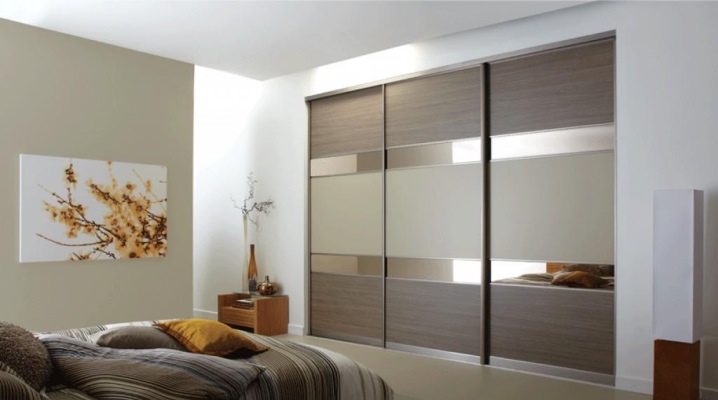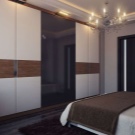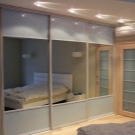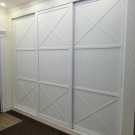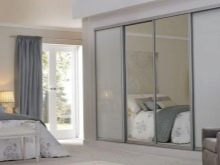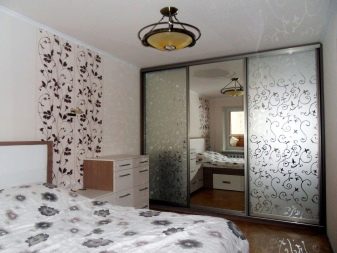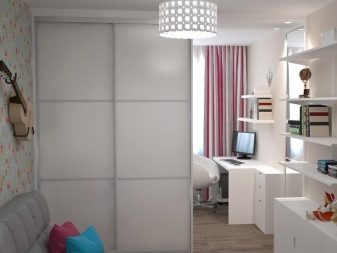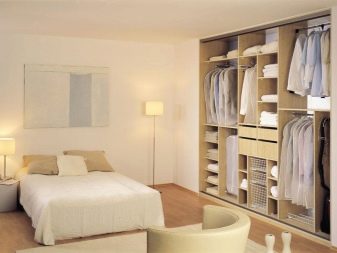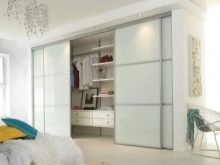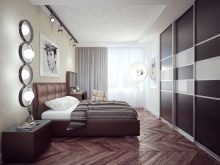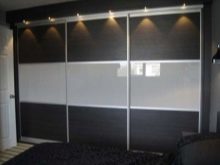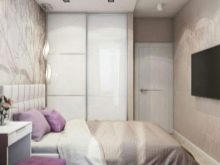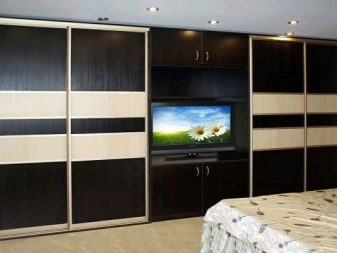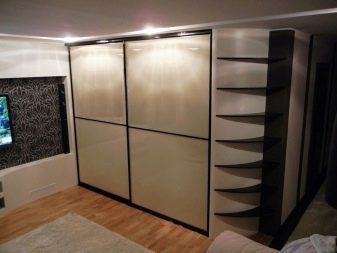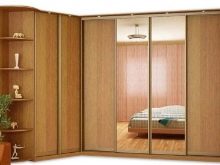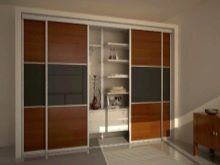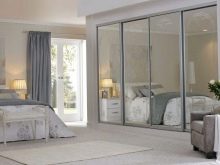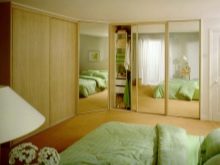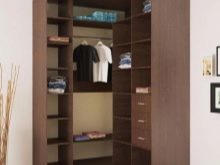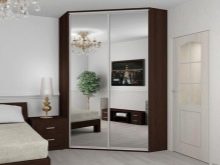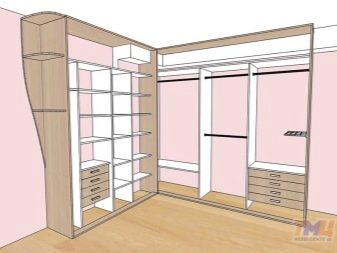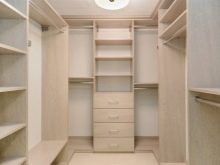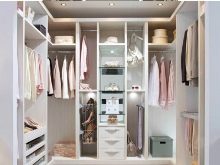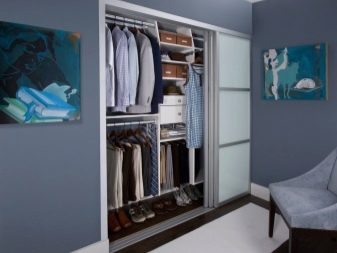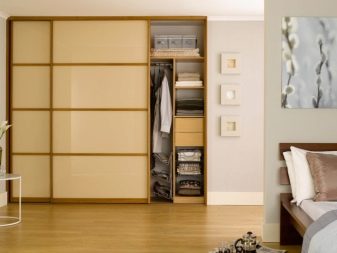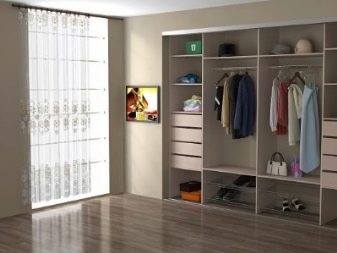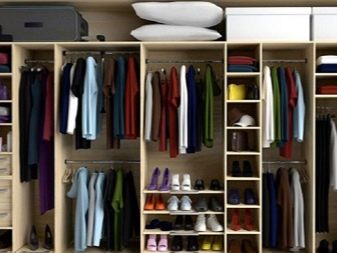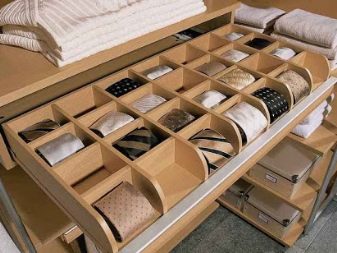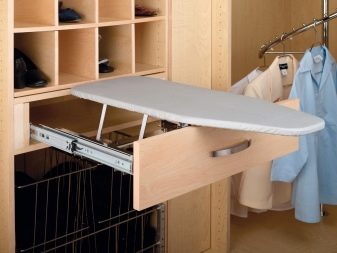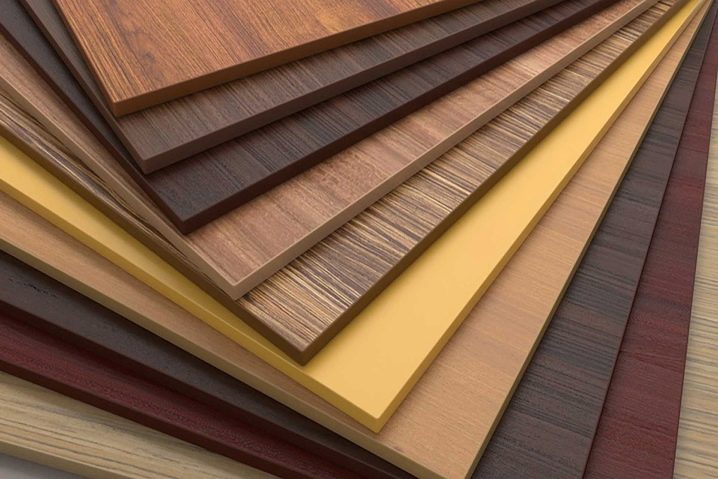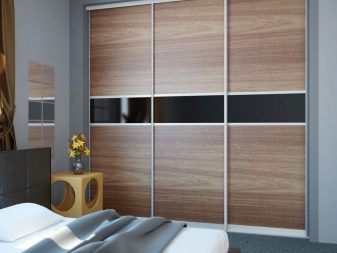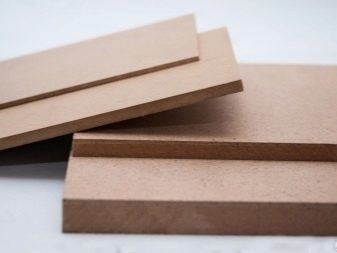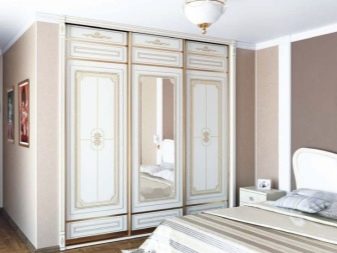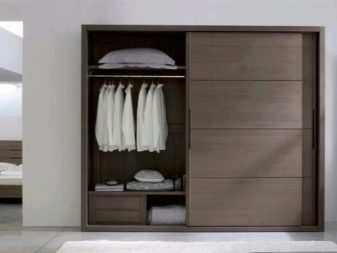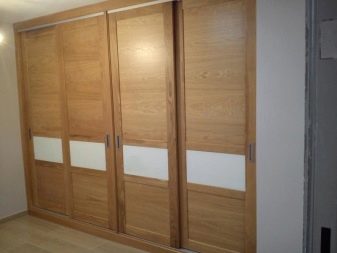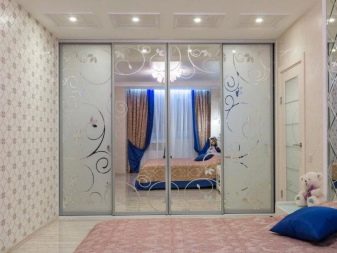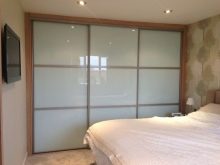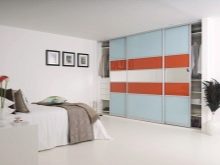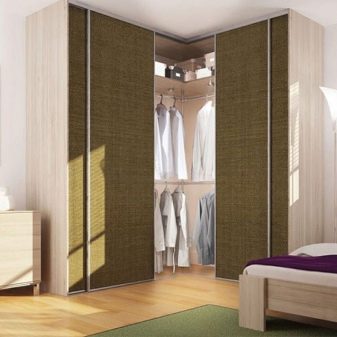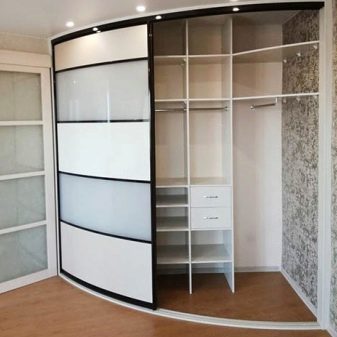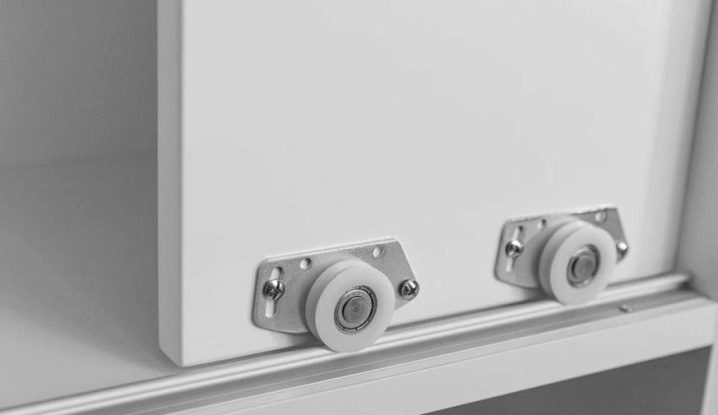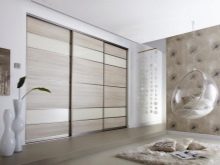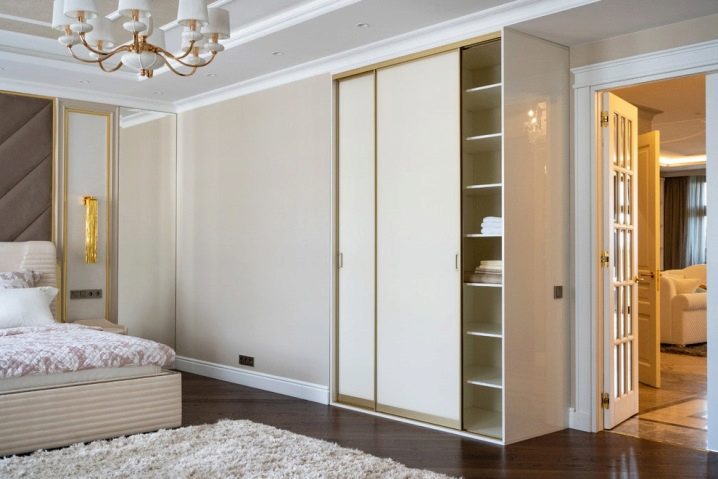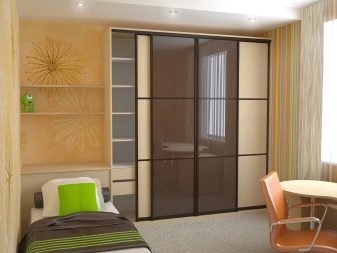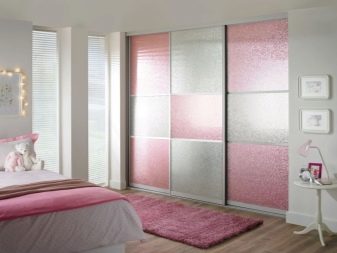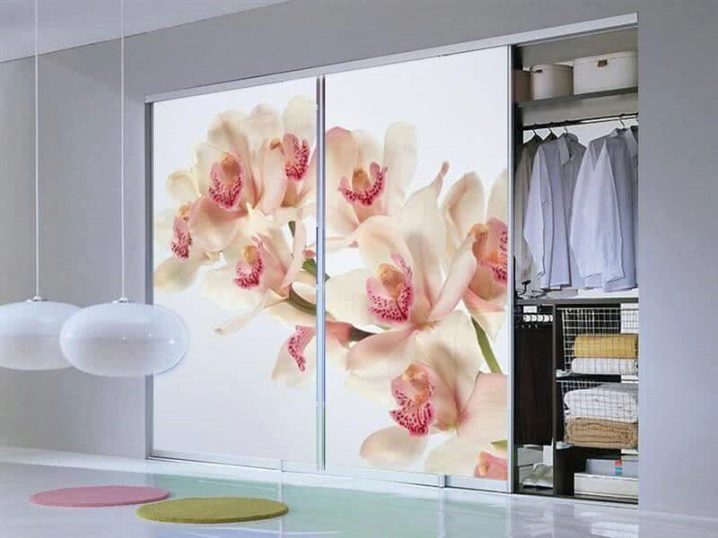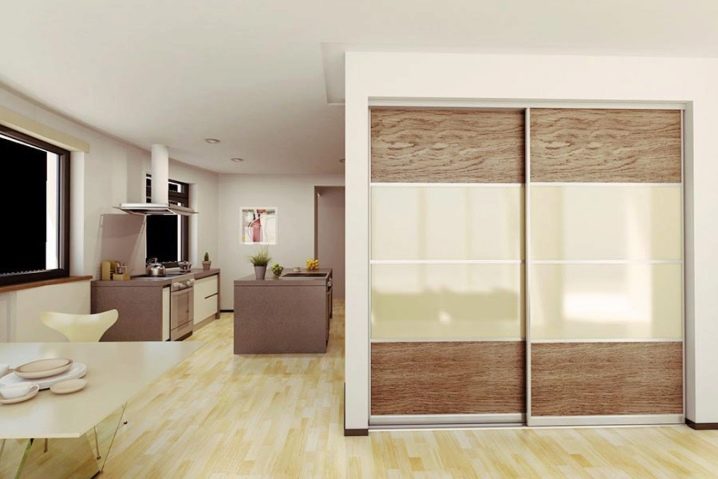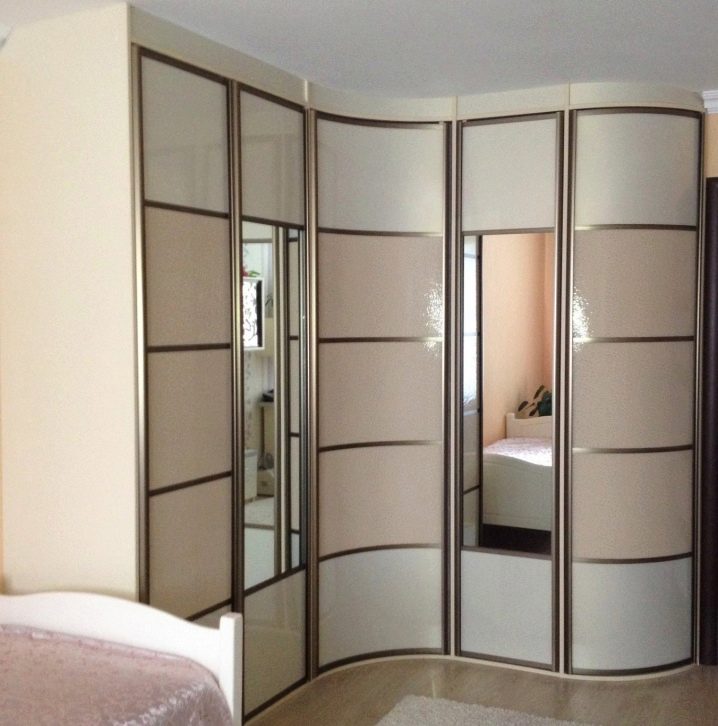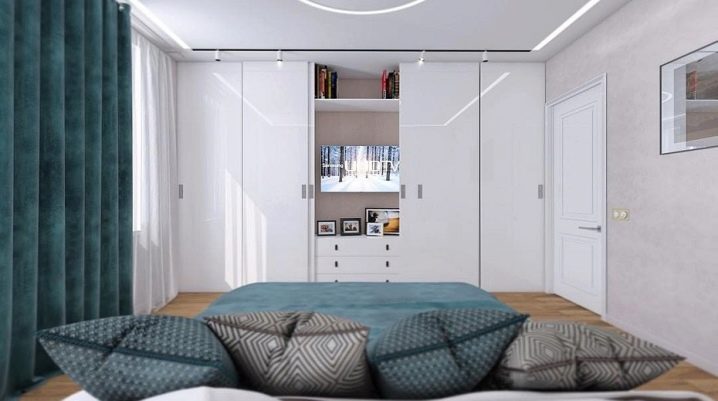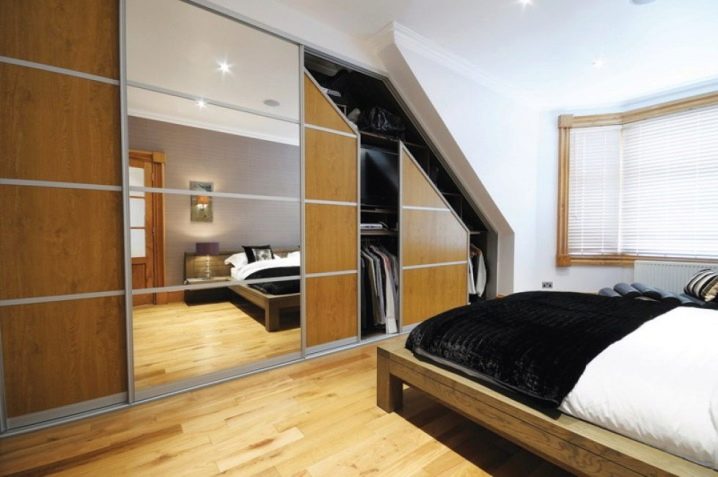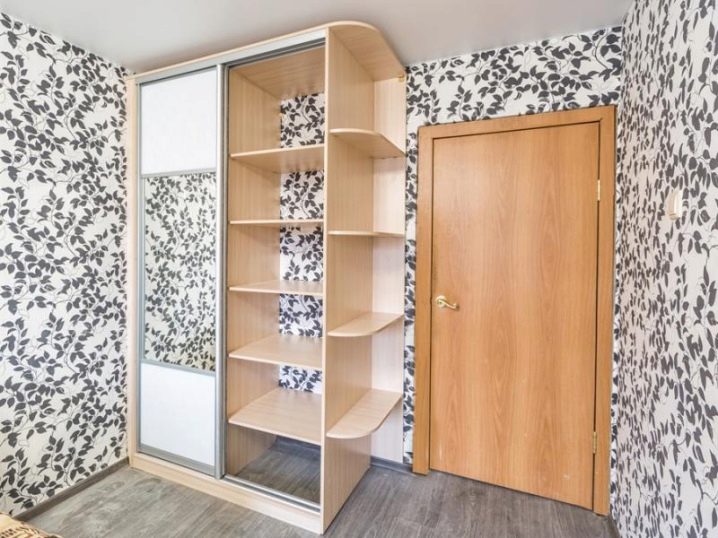How to choose a built-in wardrobe in the bedroom and position it?
Built-in furniture is a way to keep the interior in the same style. The uniform and well-chosen design is pleasing to the eye. But apart from the aesthetic, there is also a practical side. Very relevant when it comes to large items such as a wardrobe.
Advantages and disadvantages
Wardrobes come in many varieties, from laconic open shelving to monumental three-door solid wood giants. Today, many people choose built-in wardrobes for installation in the bedroom.
The irrefutable merits of choice are as follows.
- Saving space. Sliding doors do not require additional opening space. In addition, if your home has such an opportunity, you can build a closet directly into the wall or an existing niche, take a corner that is inconvenient for other purposes. In general, use one hundred percent of the usable area.
- Plenty of storage space. Again, the design of the doors allows the entire volume to be used for its intended purpose. There are no hinges to get in the way of placing a bulky box inside.
- There is plenty of room for imagination in the decor. You can make the wardrobe completely invisible, "hide" it, fit it into the wall. Or, on the contrary, choose a model with a bright design to suit your taste.
- Versatility in operation. You can organize the place inside as you like. Inside the closet, you can hide a minibar, a safe, a shoe rack or a rack for storing umbrellas - absolutely anything.
- Zoning and division of the room. With the help of such a piece of furniture, you can separate a sleeping or working place. One of the retractable panels can become a dressing screen. After all, doors can be located on both sides of the cabinet so that things inside can be accessed simultaneously from different zones.
- Correction of defects. Behind the back wall of the built-in wardrobe, you can hide the uneven surface of the wall or communications.
Also, the furniture will become additional noise insulation from neighbors.
However, built-in wardrobes have drawbacks.
- Impossibility of rearrangement. The very concept of building in excludes the possibility of simply removing or moving furniture. If you like changes or have to move frequently, you can opt for a wardrobe-compartment.
- Sticking doors. Yes, the roller mechanism is more reliable and more durable than the hinge mechanism. But he still needs care. If you do not clean and check the condition of the wheels, sooner or later the panels will stop opening easily. Most often this happens due to the ingress of debris and small objects into the rail. If not properly maintained, the mechanism can make an unpleasant creak or noise.
- Additional lighting is often needed. The design of the doors does not allow the cabinet to be opened wide. In addition, if the depth of the product is large, you may simply not see the desired thing in the dark. Think in advance about the supply of electricity to the place of future installation.
Description of species
Built-in wardrobes differ, first of all, in size. Such items are most often made to order, so just be guided by your conditions. At the same time, treat this furniture not just as a separate unit, but as a full-fledged part of the room.
Depending on the intended function, the cabinet may have a niche with an aquarium or a TV, an additional shelf on the rear facade, if the cabinet is supposed to be installed in the middle of the room.
Often, hooks for clothes or small shelves for photo frames or books are hung from the side end.
Based on the internal organization of the cabinet, it can be two-door or three-door. A bold and original solution would be a single-door wardrobe, the sliding panel of which in different positions can cover the bed, for example, and shelves with clothes.
You can also find wardrobes with a combined type of opening: a two-leaf compartment and one ordinary door on the edge.
The shape of the product depends on the characteristics of the installation site.
Rectangular
The classic version. It can be built-in as a partition between the floor and the ceiling or organized in a niche. The simple geometric shape allows the production of fully built-in wardrobes without side and back walls and half-built.
That is, you can install such a thing anywhere in the room where it is convenient for you, even behind the bed.
Corner
The living space does not always have such a layout as we would like. The location of doorways sometimes leaves entire corners unnecessary, prevents other furniture from being put there. The narrow and elongated triangular cabinet looks miniature, but allows you to use the entire usable area. A deep and spacious five-walled wardrobe resembles a precious stone in shape, and its side "edges" significantly increase the volume inside. If the room has an unusual layout or an original design is planned, you can stop at a trapezoidal cabinet of irregular shape with four walls.
L-shaped
As the name suggests, such pieces of furniture are in the shape of the letter G with the same or different lengths (and widths) edges. Most often they are equipped with four sliding panels, but they can also have a combined type of opening.
One of the halves can be completely open, like a shelf for flowers, books, or even have a table top and turn into a full-fledged workplace. The second is reserved for storing clothes and other things. Also, the first part can be completely inscribed into the wall, and the second can have a body and fence off the recreation area.
U-shaped
A huge wardrobe, adjacent to three walls at once, is able to completely hide in itself a sleeping place, a workplace, and a dressing table. However, the U-shape is often used to organize a dressing room, even in small niches.
If the building plan allows you to go deep into the walls, you can store shoes, clothes on hangers, folded things in it, and even arrange a folding ironing board there.
Filling options
The classic organization of space inside the cabinet is as follows.
- The upper elongated shelf in the style of a mezzanine.
- Side horizontal shelves on one or both sides for folded items.
- A hanger bar in the middle, sometimes two bars at different heights.
- Many cabinets have drawers at the bottom. Under the high barbell compartment, there is often a shoe rack or crossbars for compact storage of heeled shoes.
The basic rules imply convenience and comfort. The bedroom closet should have a storage compartment for bedding if there is no other chest of drawers or drawer in the bed.
Everyday things are kept at eye level so that they are always in sight and at hand. It is customary to place the hanging rods horizontally. On the uppermost and most difficult to access shelf, they store things from a different season: in the summer they are hats, scarves, and in the winter - sandals and swimwear.
When making a wardrobe to order, you can take into account all your whims. For example, inside can hide a low drawer with sections for storing ties. A woman can devote one of the sections to her jewelry, providing it with lighting, a mirror and compartments for containers with jewelry.
Even the sliding panel itself can provide additional storage space. When closed, the cabinet looks like a wall rack with cute interior knick-knacks, and when you open it you get access to its insides.
If the depth and height of the niche allows, the fold-out bed or roll-out sofa can be stored directly inside. For small studio apartments, simply an irreplaceable way to organize the space the way you want.
You can also hide an ironing board, a dressing table with lighting and a mirror in the wardrobe.
When planning your furniture's shelves, consider the materials from which you would like to make them and the maximum load that the structure can withstand.
Materials (edit)
The most popular material for making furniture is chipboard. The abbreviation is particle board. That is, large wood shavings are held together with resin and pressed into durable panels. A separate common type is laminated chipboard (chipboard). Its appearance is very pleasant, glossy, and the coating additionally protects against water and swelling.
High-quality chipboard is not afraid of wet cleaning, but if you handle the furniture carelessly, over time, chips will appear, into which drops can fall and cause unpleasant consequences.
But the variety of colors and stylization for any pattern - from wood to stone - more than satisfy design needs.
For the manufacture of the cabinet body, thick sheets of 12 and more millimeters thick are used, and for small shelves they are thin, which allows you to save on material and reduce the final cost of the product.
The second type in the ranking is MDF. The letter abbreviation from the English phrase is translated as medium-strength fiberboard. In production, urea resins are also used, but much smaller chips are used, and the pressing takes place at a high temperature. The panels are denser and much less flexible than chipboard sheets, which is only on hand in furniture production. Although, of course, chips and cracks also negatively affect the operation.
The veneer basically has the same MDF or chipboard board, but faced with a thin layer of wood. Veneer furniture is more expensive because it is more difficult to manufacture and requires higher material costs. The advantages of veneer are exactly the same as in the two previous cases, but are complemented by the complete illusion of using a solid wood panel.
Only an array is better than veneer. Luxurious and noble solid wood furniture emphasizes the status of the owner, incredibly beautiful, but also expensive.
Often in the manufacture of cabinets, all materials are combined. For example, the frame is made of durable MDF, the shelves are made of chipboard, and the front side is made of veneer.
Design
In the matter of cabinet design, the main role is played by the appearance of the facade, that is, the sliding door. Most often, models with a mirror are preferred for the bedroom. It is convenient and aesthetically pleasing, the mirror adds volume and space to the visual of the room, filling the room with light.
Modern wardrobes can be mirrored not only in the sense of covering the sliding panel, but also in terms of decor. For example, the design of a piece of furniture can repeat the opposite wall: have the same print as on the wallpaper, or a symmetrically located composition.
When choosing a color palette for a restroom, people often prefer light, calm tones. Glossy white cabinets are very stylish and look expensive and imposing.
At the same time, the coupe interior can play the role of a bright accent. The outer door can become a separate art object with three-dimensional stucco molding or shiny ceramic mosaics.
Secrets of choice
In general, the secret is very simple: try to make the most of all available usable space. Furniture sizes can be any for a specific request.
It makes sense to install a corner cabinet in a small room. So even a seemingly useless bedroom place will become important and meaningful.
By the type of fastening of the doors, there are suspended and with a bottom support. For hanging, it is advisable to choose mortise handles.If you accidentally forget, or if you slip and pull on the protruding handle, the blade can tilt and even jump out of the rail, and these parts are quite heavy. The consequences of a thick sheet of MDF or chipboard falling on a person are sad.
In terms of safety for sliding doors with bottom support, pay attention to the material of the rollers and casters. Plastic wheels can break under the weight of a heavy canvas and fail faster. Give preference to rubber-based elements.
The rails themselves are made of either aluminum or steel. Again, the size (and therefore the weight) of the doors will tell you which one is right for you. Steel is stronger and more expensive, and aluminum can bend and cause galling.
Depending on the number of household members - and, accordingly, the weight of things that will be stored in the closet - choose a suitable, durable material for making furniture. Small wardrobes built into the wall look great even from thin chipboard. It is better to order hull and massive structures from MDF or solid wood, depending on the length and width of the largest part.
Location rules
First of all, study your home plan. Load-bearing walls do not allow gouging, interventions without approval. Such actions are comparable to redevelopment.
If you have arranged a redevelopment, then a small rectangular cabinet can close an unnecessary passage, fit into the former door frame, and its sash will move off right on top of the wall.
When you have chosen a place to build in (or it was already in your apartment, house), select the type of door opening. Will there be room on the side to hit the door? Or should the doors cover one another? It depends on how wide you can open the closet, and hence its internal layout.
If you want furniture with a mirrored surface, pay attention to the location of the bed. Many people feel uncomfortable reflecting in the mirror while sleeping.
Also, watch out for the fact that even the best materials don't like long-term exposure to moisture and heat. The walls will swell or dry out, the panel may warp, and it will stop walking normally on the rails. There is no need for condensation, excess moisture or heat from a hidden battery in the place of installation.
If the walls cannot boast of perfect straightness, consider this point when designing. A sliding wardrobe can either hide these annoying flaws, or get skewed because of them.
Examples in the interior
A small selection of photos will be useful to visualize the above:
- an elegant wardrobe with an accent in design;
- austere classic compartment that separates the bedroom from a full dressing room;
- an unusual streamlined corner wardrobe in the Art Nouveau style;
- laconic interior with a niche for a TV;
- an excellent game with a non-standard roof and ceiling layout;
- compact corner cabinet with side shelves.
